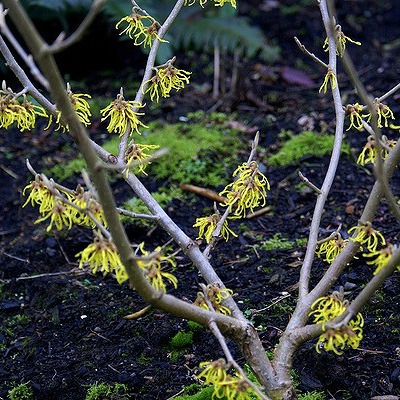
While all the blooms of late summer are nearly spent by mid to late September, there is one shrub just hitting its stride – witch hazel. Witch hazel (Hamalemis virginiana) is a plant unique to New England, with its greatest concentration in Southern New England.
Witch hazel grows to a height of fifteen feet and prefers moist shade or semi-shade areas under hardwoods. The leaves are deciduous, of oval shape with a distinct saw-tooth pattern around the outside edge. The fruit ripens at the time the leaves are falling. The brown, nut-like pods open in an explosive pop, sending the seeds forth onto the ground.
Throughout centuries witch hazel was used for divining rods, as its forked twigs were ready made for dowsing. Medicinal uses proved to be more fact than fiction. Native People used the bark for its healing qualities. Today, its bark, twigs and leaves are distilled into an astringent and used for home remedies as well as an ingredient in medicines.
It is an interesting plant to look for when hiking the region’s trails this month.